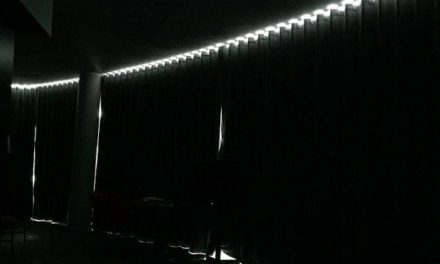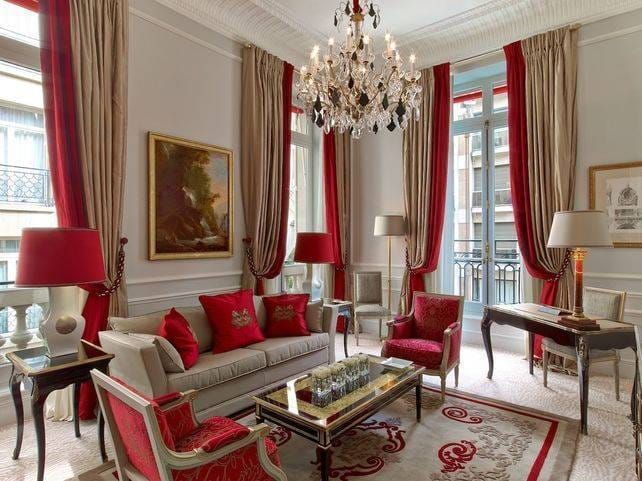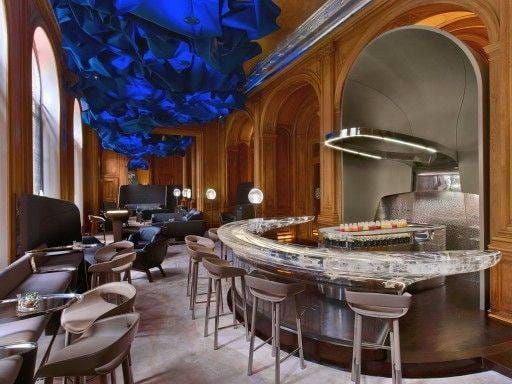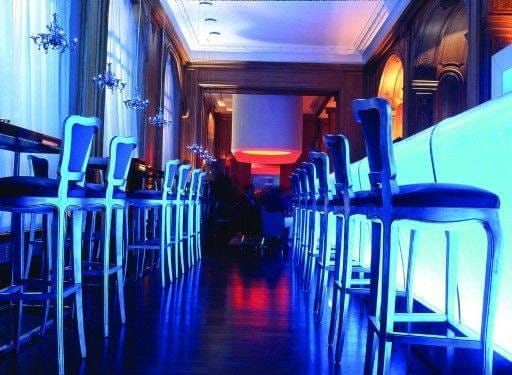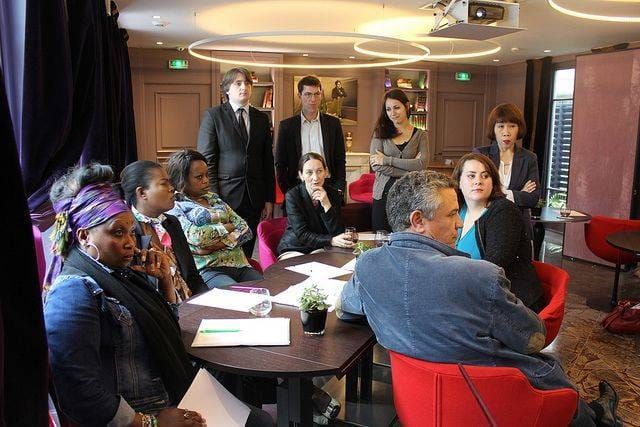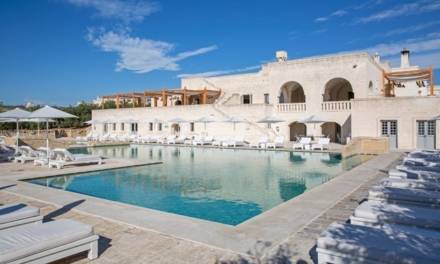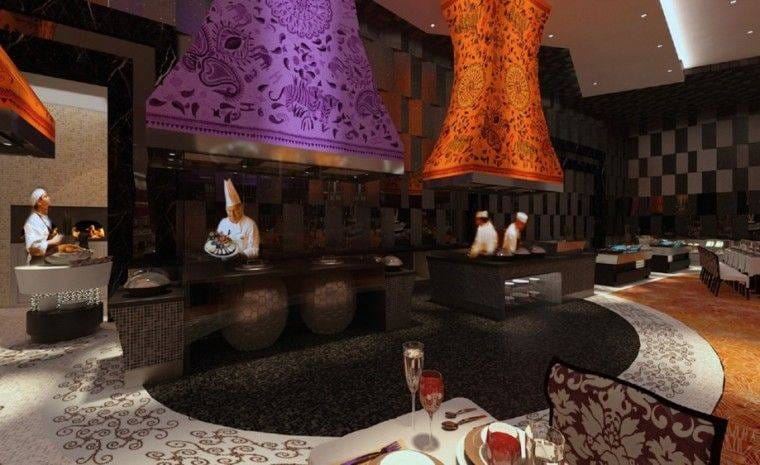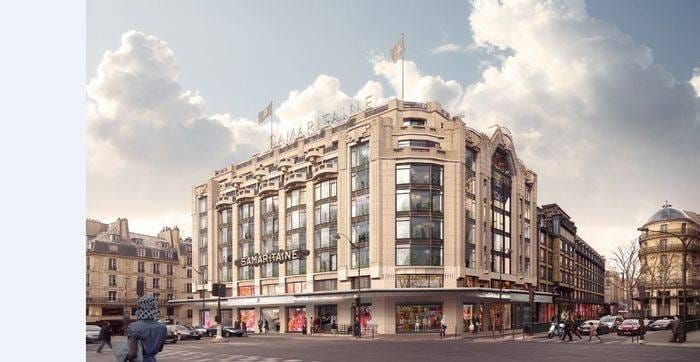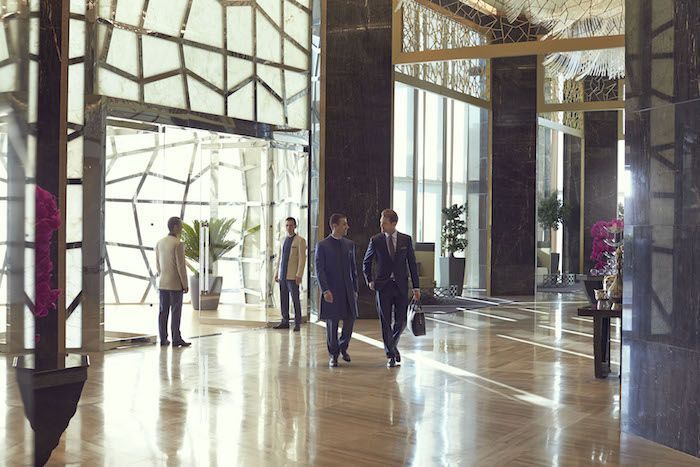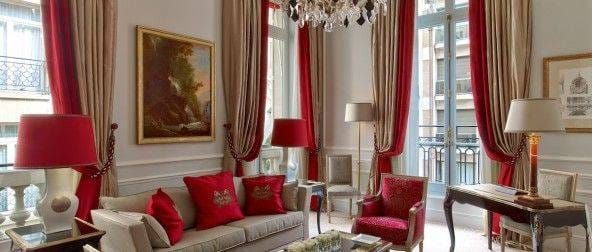Once Upon a Time at the Plaza Athénée
François Delahaye and his team have taken to their feather pens to write the next chapter of the history of the Plaza Athénée. Their ambition is a marvelous one: ONCE UPON A TIME, THERE WAS THE PALACE OF TOMORROW.
The hotel has acquired its neighboring buildings in its plan for expansion. Close to 5,000 m2 have been integrated to give way to new suites and salon rooms.
The vast majority of hotels often wait 30 years or more before they renovate. When they do renovate, the hotel becomes the most beautiful hotel for miles around—and then, after a few years, it grows dull and is forced close in order to regain its popularity. This, at least, is how the Crillon and the Ritz in particular have come to arrive upon full-scale renovation. The Plaza, however, remains remarkably avant-garde on this matter. The latest version of the Alain Ducasse Restaurant dates from 2008. The bar alone dates from 2002 (even then, it was already a bar that was ahead of its time). Today, it is no secret that time moves at a more rapid pace; technology is accelerating and bringing both comfort and convenience. The modes of consumption are rapidly evolving, and it is thus entirely natural to follow this evolution.
In my opinion, it is of the utmost importance for a Palace to stay at the cutting edge of technology and offer an ambiance and décor that correspond to its generation. It must resist against becoming burned out and letting itself go. The Plaza Athénée is an example of a hotel that has succeeded in this respect—it has thoroughly inscribed itself into the spirit of modernity without betraying its history. As I often like to say throughout my site, clients like hotels that change everything without changing anything. Clients appreciate hotels that allow them to stick to what is familiar while consistently keeping with the latest innovations.
The new bar of the Plaza Athénée
The former bar of the Plaza Athénée
The Plaza is seeking to welcome a new clientele: the children of the previous generation’s clients who have now grown up. This generation, like every other, has its own needs and incentives. And the Plaza Athénée is certainly gearing up for this new era. For this purpose, it has enlisted the help of Bruno Moinard, interior architect, for the décor of the living spaces, as well as designers Patrick Jouin and Sanjit Manku for that of the Alain Ducasse restaurant and the bar, and finally Marie-José Pommereau for the décor of the rooms and apartments.
The biggest challenge has been bringing together different interior designers. After all, each one brings his own style, his own view on the story of the building. The Plaza, however, is faithful to its designers, thereby allowing free expression for the architects who are familiar with the space. Their contribution explains the Plaza’s timeless ambiance and the brilliance of the various spaces.
For most hotels, the interior décor is often entrusted to a single interior designer. Over time, I have come to see there are nothing but advantages to doing so. It is worth recognizing, after all, that an important component of luxury is time, the time for things to arrange themselves, to see through various evolutions and achieve perfection only gradually. For instance, the Alain Ducasse Restaurant is currently on its third renovation with Patrick Jouin, and it remains thoroughly interesting to see the evolution of his work. (Be sure to check out my interview with his associate, Sanjit Manku). After all, he enjoys the major advantage of being familiar with the spaces and seeing the reaction of the clients and staff team, thus allowing him to introduce a new spirit while maintaining the continuity of the space.
To learn more about room rates at the Plaza Athénée, click here.
Laurent Delporte, an editor and conference speaker, is a strategic expert in the sector of hotels. A visionary, he brings his unique look on hotels in service to the decision-makers in the industry, whether to enhance the development of new projects or strategic visions.
Laurent has visited and audited over 350 hotels across the world and also participates in mystery visits to provide quality control for the world’s finest hotels.


 HOME
HOME

